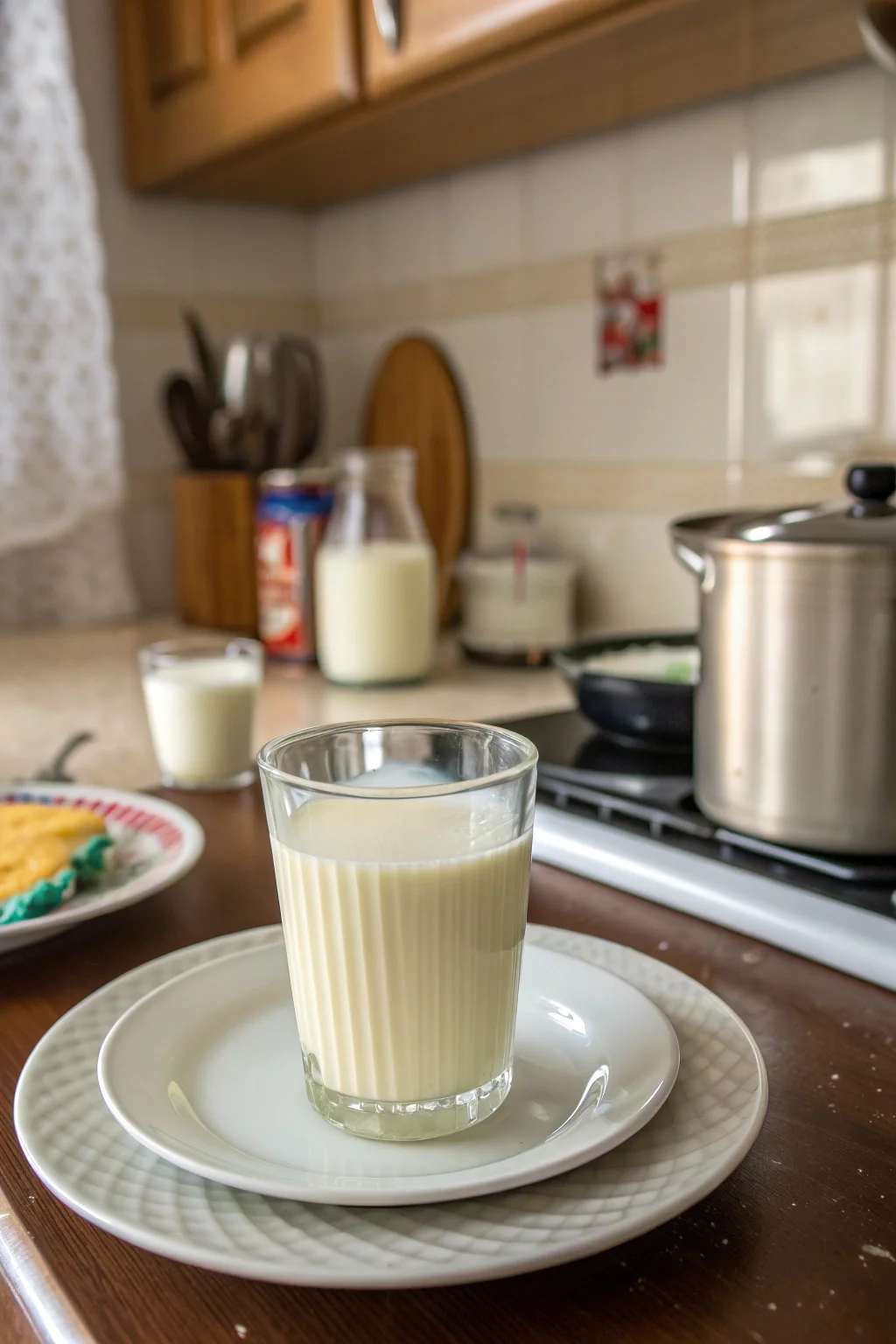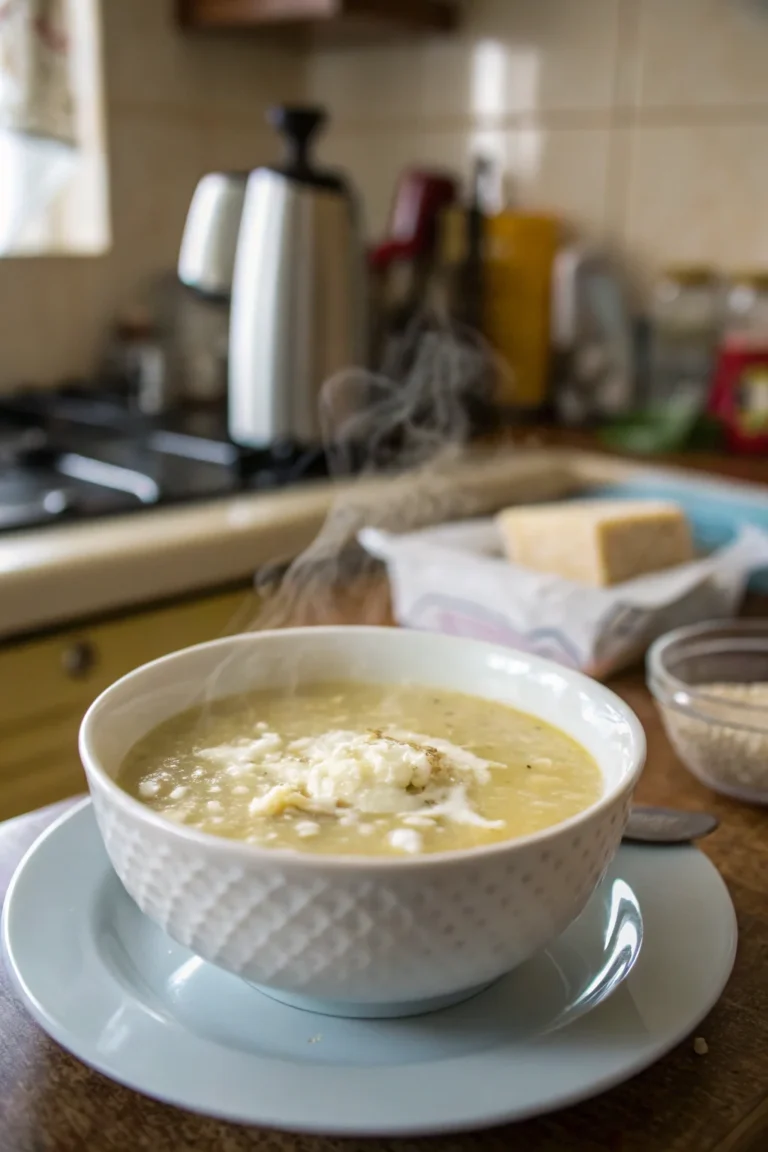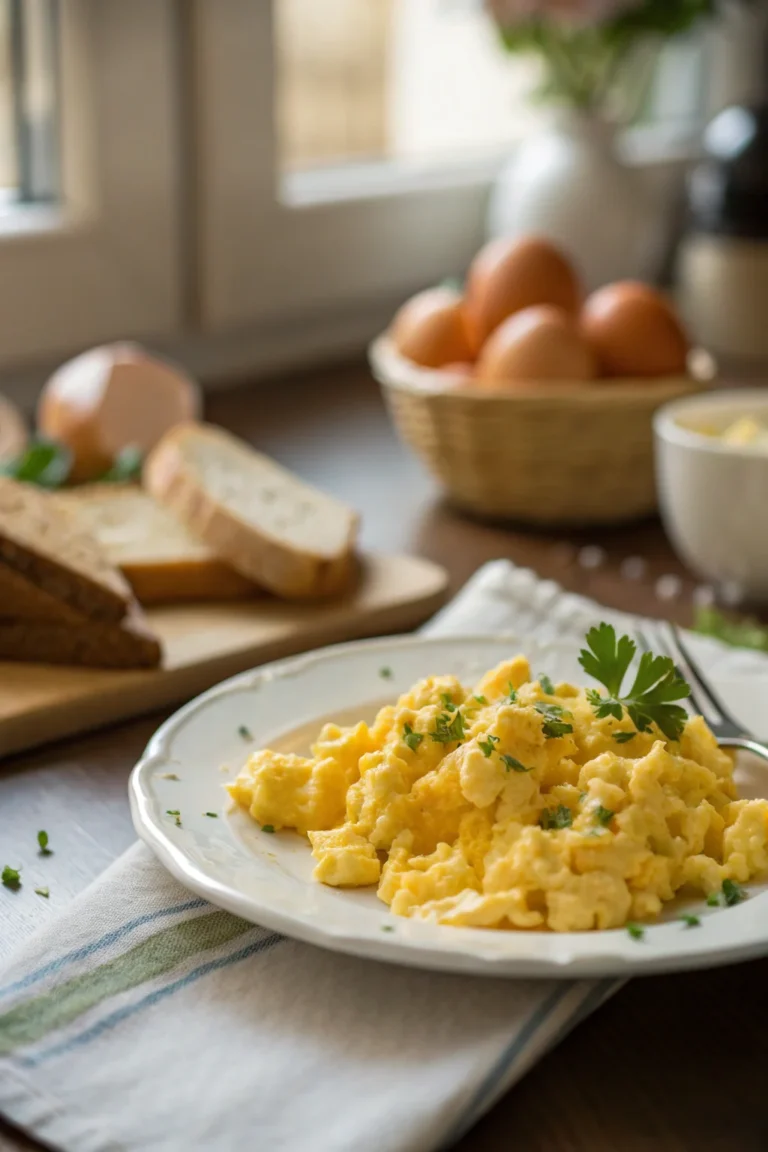How to Make Buttermilk at Home | Easy DIY Recipe
Making buttermilk at home is both simple and satisfying. Whether you’re baking fluffy pancakes or whipping up a creamy ranch dressing, homemade buttermilk is a versatile ingredient that can elevate your dishes. This guide will walk you through the process of making buttermilk from scratch, answer common questions, and provide practical tips to ensure your buttermilk is perfect every time.
Buttermilk, traditionally a by-product of butter making, is known for its slightly tangy flavor and thick consistency. Modern buttermilk is usually cultured, meaning it is made by adding bacterial cultures to milk. However, when you’re in a pinch or looking to make it fresh, the DIY method outlined below is an excellent alternative.
Table of Contents
What Ingredients Do I Need to Make Buttermilk at Home?

To make buttermilk at home, you’ll only need two basic ingredients:
- Milk: Choose whole milk for a richer texture, or use low-fat milk if you prefer a lighter option. Whole milk tends to provide a fuller, creamier texture to the buttermilk, which can be particularly desirable in baking and cooking. However, using low-fat milk can be beneficial for those watching their fat intake.
- Acid: Lemon juice or white vinegar are the most commonly used acids. Both lemon juice and vinegar have acidic properties that cause the milk proteins to curdle, which is essential for achieving the right consistency and flavor in your homemade buttermilk.
Instructions:
- Measure 1 cup of milk – Ensure the milk is fresh. Stale milk can affect the taste and spoil the buttermilk quickly.
- Add 1 tablespoon of acid (either lemon juice or white vinegar) – Pour the acid into the milk and give it a good stir. You want to ensure it’s thoroughly mixed so that the acid can start working on the milk proteins effectively.
- Stir and let the mixture sit for about 10 minutes. The milk will thicken and curdle slightly, resembling traditional buttermilk. This waiting period allows the milk to react fully with the acid, creating the characteristic tangy flavor and thick consistency.
If you want to make a larger batch, simply scale up the amounts while keeping the same ratio of milk to acid.
Can I Use Non-Dairy Milk to Make Buttermilk?
Yes, you can make buttermilk using non-dairy milk. This is an excellent option for those who are lactose intolerant or follow a vegan diet. Non-dairy buttermilk can be used in the same applications as dairy buttermilk, making your favorite recipes accessible to those with dietary restrictions.
Here’s how:
- Choose a non-dairy milk: Almond, soy, or oat milk work well. Each type of non-dairy milk will impart a slightly different flavor profile to your buttermilk, so choose based on your taste preference. Almond milk tends to be mild and slightly nutty, while soy milk is creamier and more neutral. Oat milk offers a subtle sweetness that can be quite pleasant in baked goods.
- Add an acid: Use the same ratio of 1 tablespoon of lemon juice or vinegar per cup of non-dairy milk. If you’re making buttermilk for sweet dishes, lemon juice might enhance the flavor better than vinegar.
- Mix and let sit: Allow the mixture to sit for 5-10 minutes until it curdles slightly. The curdling process is generally less pronounced with non-dairy milk, but this doesn’t affect its utility in recipes.
Experiment with different non-dairy milks to find the taste and texture you like best. Some might prefer the nutty undertones of almond milk, while others might enjoy the creamier consistency of soy milk.
How Long Does Homemade Buttermilk Last?
Homemade buttermilk is best used immediately, but it can be stored in the refrigerator for up to a week. The freshness of your milk and cleanliness of your storage container can affect its shelf life.
Storage Tips:
- Use an airtight container to prevent contamination. Glass jars with tight-fitting lids are ideal for storing buttermilk, as they prevent odors from permeating and preserve freshness.
- Label the container with the date it was made to track freshness. This helps ensure you’re using the buttermilk within its viable period.
- Check for spoilage: If the buttermilk smells sourer than usual or has visible mold, discard it. Fresh buttermilk should have a pleasant, tangy smell, not a sharp or unpleasant odor.
For more information on storing dairy products, consider checking out USDA guidelines.
What Can I Substitute for Buttermilk in Recipes?
If you’re out of buttermilk, there are several substitutions you can use. These alternatives can save the day when you’re in the middle of a recipe and realize you’re out of buttermilk.
- Milk with acid: As described, mix milk with lemon juice or vinegar. This is the most straightforward substitution and works well in most recipes.
- Yogurt: Thin plain yogurt with a little water or milk until it reaches the consistency of buttermilk. This substitution adds creaminess and tang, similar to buttermilk, and is particularly useful in recipes where a thicker batter is desired.
- Sour cream: Mix with a bit of milk to achieve the desired consistency. Similar to yogurt, sour cream adds richness and a subtle tang to recipes.
These substitutes provide similar tanginess and acidity, making them great alternatives in baking and cooking. Each alternative will impart a slightly different flavor and texture, so feel free to experiment to find what you like best.
Why Is Buttermilk Used in Baking?

Buttermilk is a popular ingredient in baking due to its:
- Acidity: Reacts with baking soda to help baked goods rise. The acid in the buttermilk activates the baking soda, creating carbon dioxide bubbles that expand and make baked goods light and airy.
- Flavor: Adds a slight tanginess, enhancing the overall taste. This tanginess can balance the sweetness in cakes and pastries, adding depth to the flavor profile.
- Tenderizing properties: Helps break down gluten, resulting in softer textures. This is particularly beneficial in recipes like pancakes, muffins, and cakes where a tender crumb is desired.
If you love baking, you might also enjoy learning how to make your own sourdough starter. Sourdough and buttermilk share similar properties in terms of adding flavor and tenderness to baked goods.
Can I Freeze Buttermilk?
Yes, buttermilk can be frozen, although it may separate upon thawing. Freezing buttermilk can be a great way to ensure you always have some on hand for baking emergencies.
Freezing Tips:
- Use ice cube trays to freeze in small portions. This allows you to thaw only what you need for a recipe.
- Transfer to freezer bags once frozen to save space. Be sure to label the bags with the date and quantity for easy reference.
- Thaw in the refrigerator and shake well before using to recombine. While the texture may change slightly, the buttermilk is still useful in recipes, especially baked goods where texture changes are less noticeable.
Frozen buttermilk is best used in baked goods where the texture change will be less noticeable. It’s perfect for pancakes, waffles, and muffins.
How Do I Know If Buttermilk Has Gone Bad?
Signs that buttermilk has spoiled include:
- Off smell: A strong, unpleasant odor indicates spoilage. Fresh buttermilk should have a mild, tangy scent.
- Mold: Visible mold is a clear sign to discard it. Buttermilk should be smooth and uniform in appearance.
- Separation and texture: Some separation is normal, but if it’s unusually chunky or slimy, it’s best to throw it away. Fresh buttermilk may separate slightly, but a good shake should recombine it.
When in doubt, trust your senses and follow food safety practices. Always err on the side of caution when it comes to dairy products.
Is Homemade Buttermilk Healthier than Store-Bought?
Homemade buttermilk allows you to control the ingredients, which can be beneficial for those with dietary restrictions or preferences. While both homemade and store-bought buttermilk can be part of a healthy diet, making your own offers some distinct benefits.
Benefits:
- No additives or preservatives: Store-bought buttermilk often contains stabilizers. Homemade buttermilk is free from these additives, which some people prefer to avoid.
- Customizable fat content: Choose whole or low-fat milk as desired. This allows you to tailor the buttermilk to your nutritional needs.
- Freshness: Made on demand, reducing the need for long shelf-life additives. Freshness often translates to better flavor and texture in your recipes.
For more insights into the benefits of homemade cooking, check out our article on homemade vs. store-bought ingredients. Understanding the pros and cons of making ingredients from scratch can help you make informed decisions in the kitchen.
What Are Some Recipes That Use Buttermilk?
Buttermilk is a versatile ingredient in many recipes, including:
- Pancakes and waffles: Adds fluffiness and flavor. The acidity of the buttermilk helps create a light batter that cooks up into airy, tender pancakes or waffles.
- Biscuits and scones: Contributes to a light, tender crumb. Buttermilk interacts with the leavening agents in these recipes to create a soft, flaky texture.
- Dressings and marinades: Provides a tangy base. Buttermilk can be used in creamy dressings like ranch or as a marinade for chicken, where its acidity helps tenderize the meat.
Experiment with these recipes to fully appreciate the versatility of buttermilk. You’ll find that it not only improves texture but also adds a subtle depth of flavor that enhances a wide variety of dishes.
How Can I Make Buttermilk Without Lemon Juice or Vinegar?
If you don’t have lemon juice or vinegar, you can use other acidic ingredients. Having alternatives on hand ensures you can always whip up buttermilk when needed.
- Cream of tartar: Mix 1 ¾ teaspoon with 1 cup of milk. Cream of tartar is an acidic powder that can mimic the effect of lemon juice or vinegar, making it a useful pantry staple for baking.
- Yogurt: Blend equal parts yogurt and milk. This mixture creates a rich, creamy buttermilk that’s excellent in baked goods.
These alternatives work well, providing the necessary acidity for your recipes. Each option might bring its own unique flavor to the final dish, so choose based on what you have available and what suits the recipe best.
How Does Buttermilk Affect the Texture of Baked Goods?
Buttermilk affects the texture of baked goods by:
- Reacting with baking soda: This creates carbon dioxide bubbles, helping dough rise. This reaction is crucial for achieving the desired lightness and fluffiness in cakes and quick breads.
- Softening gluten: Results in tender, moist baked goods. The acidity in buttermilk helps to break down gluten strands, which can otherwise make baked goods tough.
- Providing moisture: Keeps baked items from drying out. Buttermilk’s thicker consistency adds moisture, which is retained during baking, enhancing the overall texture.
Using buttermilk can significantly improve the texture of your favorite baked treats. Whether you’re making muffins, cakes, or scones, the inclusion of buttermilk can transform them into bakery-quality goods.
Can I Use Powdered Milk to Make Buttermilk?
Yes, you can use powdered milk to make buttermilk. This method is particularly useful if you don’t have fresh milk on hand.
Here’s how:
- Reconstitute the milk: Mix powdered milk with water according to package instructions. Ensure the mixture is smooth and fully dissolved to mimic fresh milk.
- Add acid: Stir in 1 tablespoon of lemon juice or vinegar per cup of reconstituted milk. This will create the necessary acidity for the buttermilk.
- Let sit: Wait 5-10 minutes until it curdles slightly. Just like with fresh milk, this resting time allows the acid to work on the milk proteins.
This method is handy if you have powdered milk on hand and need buttermilk in a pinch. It’s a great way to ensure you can always make buttermilk, even if your fresh milk supply is low.
Wrap-Up
Making buttermilk at home is a straightforward process that can enhance the flavor and texture of your dishes. With just milk and an acid, you can create fresh, customizable buttermilk to suit your culinary needs. Whether you’re using it in baking, cooking, or dressings, homemade buttermilk is a versatile ingredient that offers numerous benefits. Enjoy experimenting with different types of milk and acids to find your perfect buttermilk recipe.
Embrace the flexibility and simplicity of homemade buttermilk. By understanding the process and benefits, you can make informed choices that will enrich your cooking and baking experiences. Happy cooking!
More on dessertpedia.blog • Search “How to Make Buttermilk at Home | Easy DIY Recipe”






